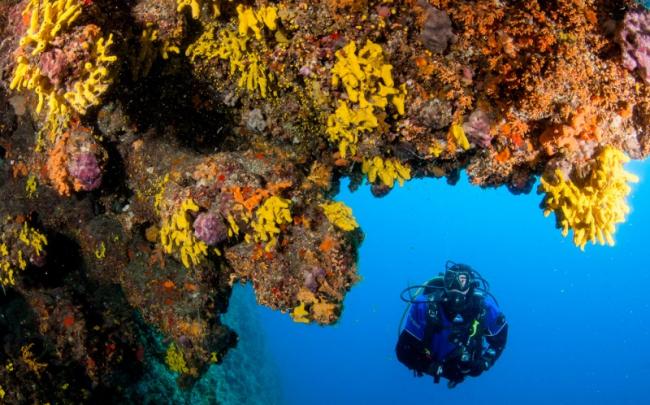
17. Exploring wrecks in the Red Sea
In the famous or nearly forgotten wrecks of the Red Sea you will need a dive light.
Many divers visited the well known Thistlegorm, Giannis D or Dunraven wrecks. The marine life of the Northern Red Sea is exciting, but these wrecks attract even more divers, who choose the Northern routes of the liveaboard boats. You can dive remains of WW II warships, older or modern cargo ships, intact wrecks or only pile of wood, maybe just the cargo- every dive spot is different.

The Gulf of Suez is still rarely dived, with a lot to discover. Although there are reports of wrecks which rest there, only a few dive boats sail to that north, because it takes 14-15 hours, and the trip is anything but comfortable when the weather is windy. The skippers know only a few wrecks' location so it's an adventure to come here to dive.
The northernmost and most attracting wreck is the SS Turkia. The 90 meters long cargo ship sank during the WWII, it was packed with war material and the maximum depth is only 24 meters. It's easy to swim into the cargo holds, and there is spectacular marine life- some divers compare it to the Thistlegorm. We were lucky to sail to the north and dive at the Turkia.

It's highly unlikely you will see any other dive boat here, so we didn't meet any other groups while we were exploring the wreck. As we spent most of our time inside the cargo holds, rooms, halls, we needed our dive lights. We didn't charge our Spark Lights dive lamps between the dives, and they worked fine for all four dives- the last one was a night dive at the Turkia too.
There are many things to see inside the Turkia. The majority of the shipment were tires and coils. We found some engines, and there are cars too. Only one of the cars seems impact. Luckily the Turkia is very far from the often dived spots, so we found the wheel which wasn't stolen.

The engine room in the middle of ship is a spectacular spot too, we looked around here as well. There are rooms in the bow and the stern where we swam into. Here every diver will need a dive light to see the items like bed frames which rest here for decades. When we went back to the deck, we used our lights to see the real colors of nudibranch which live there.
It's a different dive experience to see the Turkia wreck by night: it has lively marine life daytime, which is replaced by the hunters of the darkness. The lionfish are patrolling above the deck while the smaller and larger, colorful shrimps and crabs are looking for food.

Next day we had the chance to see 3 really rarely dived wrecks of the Gulf of Suez. One of them, the SS Scalaria was 125 meters long. It was sank during the WW II, and now it seems only a big pile of metal parts. Only the bow and the stern is intact.
Some divers said the Aboudy was the best wreck site in the Ras Gharib area. When we were here, we found a salvaging company, which dismantled most of the wreck. So we only see the bow. We swam around the remains of the Aboudy, there were some of its cargo. It was a sad experience because lot of fish lived there, we saw even an electric ray. Probably we were the last recreational divers who saw the Aboudy.

We moored near our last wreck in the afternoon. We didn't know its name until we found a few letters in the stern: it was the Bakr. It was an Egyptian survey ship which was sunk by Israeli fighter planes in 1973. It's a small, 50 meters long boat in the shallow, easy to swim around, with small rooms full of sharp metal objects.
Although we enjoyed diving at new wrecks, we finished the wreck route with the Thistlegorm. We were really lucky there, as we had great weather and there weren't too much other boats. We had an awesome time inside wreck where we needed the dive lights to see the motorbikes, look into the cockpits of cars, look around the old bathroom.

The Spark Light dive lamps' different modes and power levels were really useful in the different diving conditions. Sometimes in the surface it may seem you have plenty of choice, but under water you will enjoy this because you always can change between spot or wide beam modes, or use different power levels. In the night when look for nudibranch or in a huge room inside a wreck you will need different type of lighting. This wreck diving trip was the perfect opportunity to test our dive lights, and we were happy it worked really fine in the Red Sea.

2018.07.31
 en
en EUR
EUR

